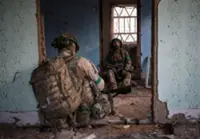The concept of Nowhere Kitchen involves paying diners who bring their own edible, uncooked leftovers to be turned into a multi-course meal where storytelling, people and food converge. — Photos: PUTTI COOP X KONGSIKL
On a rainy Saturday evening, a drive along Old Klang Road in Kuala Lumpur elicits an orchestral background soundtrack of loud, manic booms as thunderous, furious rain cascades down from the heavens. And then as though on cue, the crescendo pitch wavers and magically gives way to clear, unperturbed skies, just as I turn into a nondescript road edged by car workshops and factories.
Soon, a gentle sunset emerges and dusk bleeds its burnished orangey-red hues across the horizon. The walk into the cavernous industrial warehouse that houses KongsiKL is no less illustrious, as twinkling lights adorn the entrance and set the stage for a night of new possibilities.
Already a subscriber? Log in
Save 30% OFF The Star Digital Access
Cancel anytime. Ad-free. Unlimited access with perks.





